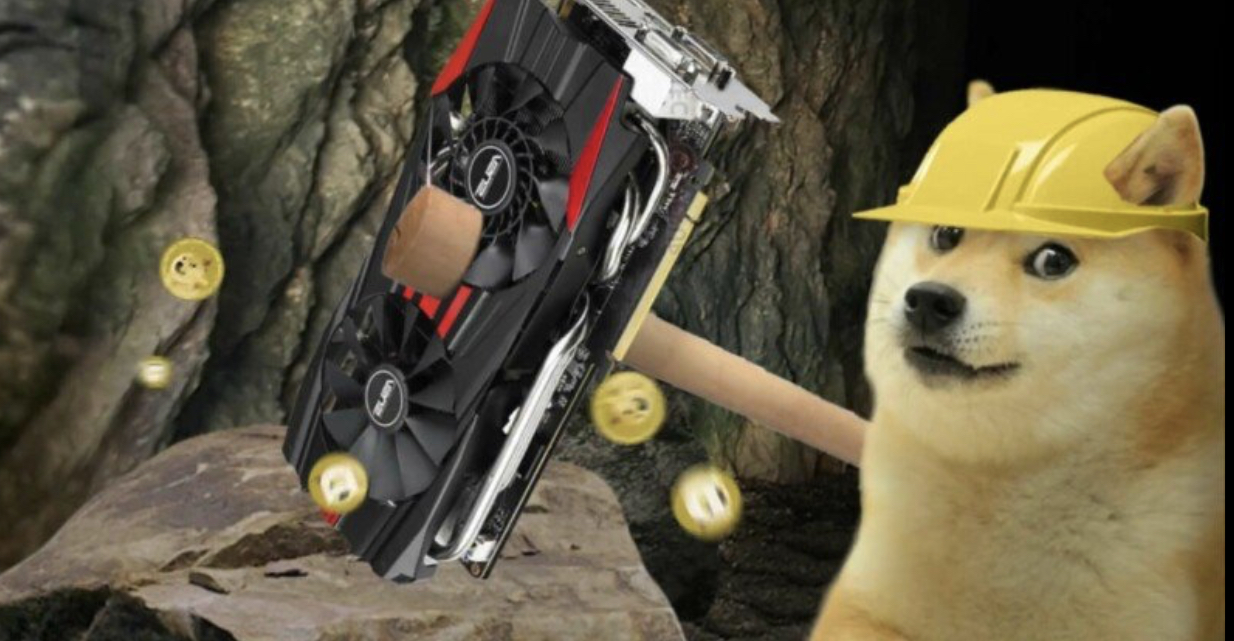Dogecoin is an open-source cryptocurrency that was created in December 2013 by programmer Billy Markus and Jackson Palmer. It’s a fun and friendly digital currency that can be used to buy goods and services, much like Bitcoin. Dogecoin differs from Bitcoin primarily in its mining algorithm, block time, and total supply.
Table of Contents
What is Dogecoin?
Dogecoin (DOGE) is a peer-to-peer, open-source cryptocurrency, considered an altcoin, and was launched in December 2013 with the image of a Shiba Inu dog as its logo[^1^]. Dogecoin was created by software engineers Billy Markus and Jackson Palmer as a payment system, initially as a “joke” to make fun of the wild speculation in cryptocurrencies at the time.
Unlike Bitcoin, which was designed to be scarce, Dogecoin is intentionally abundant, with 10,000 new coins mined every minute and no maximum supply.
Dogecoin may be used in a trading pair which refers to a combination of Dogecoin (DOGE) and another cryptocurrency or fiat currency that can be traded on a cryptocurrency exchange. These trading pairs allow you to exchange one currency for another, typically with the aim of making a profit from market fluctuations. Some common Dogecoin trading pairs include DOGE USDT, DOGE/BTC, and DOGE/ETH.
Dogecoin mining
Dogecoin mining is the process of verifying and adding transactions to the Dogecoin blockchain, which is a decentralized ledger. Miners use their computer hardware, usually specialized devices called ASICs (Application-Specific Integrated Circuits), to solve complex mathematical problems. By solving these problems, miners validate and secure the network, and in return, they are rewarded with newly minted Dogecoins.
Dogecoin mining is essentially the process of using your computer’s resources to help verify transactions on the Dogecoin network, and get paid in new coins for your work. This guide will teach you how to mine Dogecoins on Windows 7/8/10 with AMD or Nvidia GPUs (graphics cards).
What you will need to mine DOGE
To mine Dogecoin, you will need to:
- have a computer that is capable of mining. This can be done on your personal computer or laptop (as long as it meets the minimum requirements).
- join a mining pool. The best way for beginners to start mining Dogecoins is through a pool because this allows you to share resources with other miners and get paid according to how much work your machine does.
- set up an account at an exchange like Bittrex or Poloniex so that when you do find some blocks, they can be sold immediately for real money.
How to mine Dogecoin
Step 1: Purchase Mining Hardware
The first thing you need to do is purchase the mining hardware. There are three main types of mining hardware: CPU, GPU and ASIC. The most popular option for beginners is a CPU or GPU, as they are relatively cheap and easy to set up. However, they don’t provide the same level of efficiency as ASICs (application-specific integrated circuits).
ASICs are more efficient than CPUs or GPUs because they were designed specifically for mining cryptocurrency like Dogecoin–they’re made with one purpose in mind: solving cryptographic problems at high speeds. However, they’re also much more expensive than CPUs/GPUs ($600-$2k), harder to set up ($50-$100) and harder yet again to maintain ($0).
Step 2: Install Mining Software/Update Drivers
After you have your Dogecoin wallet and a cloud miner, it’s time to install the mining software. There are many different types of cryptocurrency miners available in the market today. Some of them are free but most of them require a fee before installing on your PC.
If you are planning on mining Dogecoins as a hobby or for fun, then there are plenty of options available which don’t require much technical knowledge from your side. However, if you want to make money out of this activity then we recommend using more advanced software that requires some basic knowledge about how computers work and their hardware configurations (CPUs)..
Step 3: Join a Mining Pool
Joining a mining pool is the next step on your Dogecoin journey. Mining pools are groups of miners who combine their resources and split the rewards according to how much work they have done. This allows you to get more frequent payouts, instead of waiting for the time it takes for one block to be found.
Mining pools are great for beginners because they allow you to mine coins with less risk involved as opposed to solo-mining, which means you don’t have to worry about buying expensive equipment or setting it up yourself (although there are some advantages).
Step 4: Configure the mining software
Open the mining software and configure it to connect to your chosen mining pool. You will need to enter the mining pool’s URL, port number, and your account credentials. The mining pool’s website should provide the necessary information and instructions.
Step 5: Set up a Dogecoin Wallet
The next step is to set up a Dogecoin wallet. A wallet is essentially the same as a bank account and it’s where you will store all of your mined Dogecoins.
There are many different types of wallets, but we recommend using one that supports hardware wallets like Trezor or Ledger Nano S because they are more secure than other options and provide additional features such as 2FA (two-factor authentication).
Step 6: Start Mining
Now that you have your Dogecoin wallet and mining software, it’s time to start mining. First, open up your pool and enter in the necessary information (username, password, etc). Then click on “Workers” in order to add a new worker.
Select “New Worker” from this menu and enter in all of the same information as before but change the name of your worker so that it will be easy for you to distinguish between them later on if need be. Once all of these steps have been completed successfully, simply click on “Start Mining” at the bottom right corner of your screen.
How Long Does It Take To Mine 1 Dogecoin?
The amount of time it takes to mine 1 DOGE depends on the mining rig you have and how much power it can produce. If you have a more powerful rig, then it will take less time to mine 1 DOGE. However, if your rig isn’t very powerful and doesn’t have many GPUs (graphics processing units), then it could take several days or even months before you get any reward in return for all your hard work.
The average block reward for Dogecoin is about 5 DOGE per block which means that if each block takes about 1 minute on average to be found by miners then:
It would take approximately 5 minutes for one miner with a single GPU card at home who hasn’t invested thousands into his/her setup yet but wants just enough power so that they don’t lose money while still being able to earn something worthwhile.
While they’re away from their computer doing other things like eating dinner or watching TV shows instead of worrying about whether their PC will freeze up again like last week when those pesky viruses kept coming back over and over again despite being deleted several times already before finally succumbing under pressure from repeated attempts at removal.
Conclusion
In conclusion, mining Dogecoin can be an interesting and potentially rewarding venture for beginners. However, it’s essential to understand the basics and be well-prepared before diving in.
By following these guidelines and being patient, you can begin your journey into the world of Dogecoin mining and potentially earn rewards while contributing to the security and decentralization of the network.


